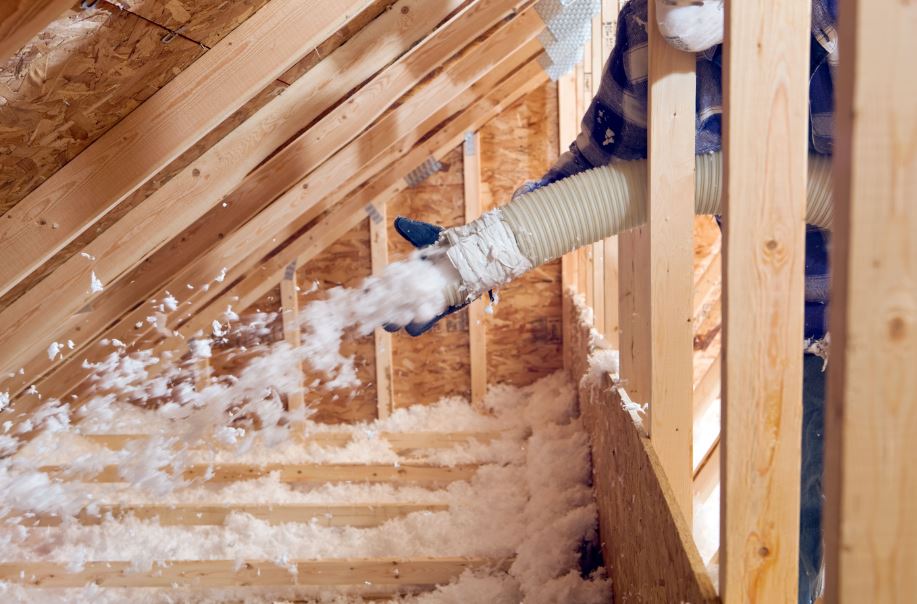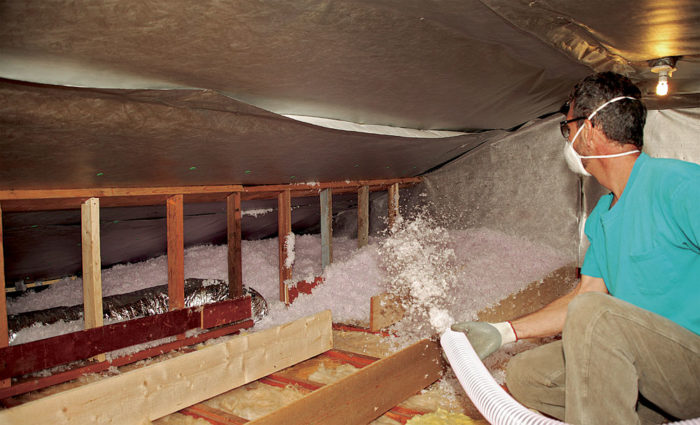Attic Insulation DFW: What You Need to Know Prior To Updating Your Insulation
Discover the Different Kinds of Attic Insulation and Their Special Advantages for Your Home's Power Performance

Fiberglass Insulation
Fiberglass insulation is one of the most typically made use of products for attic room insulation due to its exceptional thermal efficiency and cost-effectiveness. Composed of tiny glass fibers, this material efficiently catches air, producing a protecting obstacle that aids keep regular indoor temperatures. Its high R-value per inch makes it particularly effective at withstanding warmth transfer, which is important for power conservation in homes.
Installation of fiberglass insulation is fairly uncomplicated, commonly readily available in batts or loose-fill kinds, suiting different attic arrangements. Furthermore, it is resistant and non-combustible to dampness, minimizing the risk of mold and mildew development. This resilience adds to its longevity, making fiberglass a feasible long-term investment for home owners.
In addition, fiberglass insulation is frequently made from recycled materials, which enhances its eco-friendliness. The product can likewise add to soundproofing, reducing sound transfer between areas. While it is necessary to put on protective equipment during setup to prevent irritability from the fibers, the overall benefits of fiberglass insulation, consisting of energy financial savings and environmental considerations, make it a preferred selection for improving attic performance and promoting a comfortable living atmosphere.
Spray Foam Insulation
Spray foam insulation is a highly effective choice for attic room insulation, understood for its exceptional air sealing and thermal performance. This innovative insulation product is made up of a blend of isocyanate and polyol material, which, when combined, broadens quickly to fill up gaps and tooth cavities in the attic room area. Its ability to comply with different surfaces makes certain a continual barrier against air leaks, substantially decreasing warm loss throughout colder months and heat gain during warmer seasons.
One of the essential advantages of spray foam insulation is its high R-value per inch, which implies it gives superb thermal resistance in a reasonably thin application. This is especially advantageous in attics where room is commonly minimal. In addition, spray foam can help reduce wetness build-up, reducing the danger of mold and mildew development, which can be harmful to both the framework and indoor air high quality.
While the preliminary expense of spray foam insulation may be greater than conventional alternatives, its lasting energy savings, combined with increased comfort and enhanced home worth, make it a beneficial financial investment for property owners looking for boosted energy effectiveness. Attic Insulation DFW. On the whole, spray foam insulation stands apart as an efficient remedy for optimizing attic insulation
Cellulose Insulation

Cellulose insulation is a popular selection for attic insulation, primarily made up of recycled paper products treated with fire resistants. This eco-friendly alternative is understood for its excellent thermal efficiency, successfully decreasing warmth transfer in both summertime and winter months. The thick composition of cellulose enables it to fill spaces and voids in attic room spaces, giving a seamless obstacle versus air leaks.
Among the considerable advantages of cellulose insulation is its capability to resist mold and parasites, owing to the fire retardant therapies used during production. Additionally, it flaunts a high R-value per inch, which converts into remarkable energy performance. Property owners can expect lower heating & cooling expenses as an outcome of improved insulation.
Setup is generally completed through blowing loose cellulose into the wanted location, allowing for a reliable and quick process. This technique additionally minimizes disruption to the existing framework. Cellulose insulation has a relatively low environmental impact, as its production process uses recycled materials, adding to lasting structure techniques.
Rock Wool Insulation
Amongst the different alternatives for attic insulation, rock wool, likewise understood as mineral wool, sticks out as a result of its remarkable thermal and acoustic efficiency. Made from recycled or all-natural products, rock wool is produced by melting rock and spinning it into fibers, resulting in an item that supplies outstanding insulation buildings.
One of the significant benefits of rock wool insulation is its high R-value, which shows its performance in resisting heat flow. This particular not just enhances power performance however likewise contributes to maintaining a comfy indoor temperature year-round. In addition, rock woollen is inherently fire-resistant, making it a more secure choice for homes as it can stand up to high temperatures without melting or releasing poisonous fumes.
In addition, rock woollen insulation masters soundproofing capabilities, properly lowering sound transmission between areas and from outdoors sources. This makes it a perfect selection for home owners seeking a serene living environment. Rock wool is moisture-resistant, aiding to protect against mold and mildew growth and keeping the architectural stability of the attic room. Generally, rock wool insulation provides an extensive solution for enhancing energy performance, safety and security, and convenience in residential settings.
Radiant Barrier Insulation
Radiant barrier insulation offers as a reliable solution for reducing warm transfer in attic rooms, specifically in warmer climates. This kind of insulation works by reflecting convected heat far from living rooms, thereby reducing the amount of warm that goes into a home throughout heat - Attic Insulation DFW. Usually made up of a very reflective product, such as light weight aluminum foil, radiant barriers are set special info up in attic rooms, dealing with the click over here roof covering, where they can intercept incoming heat from the sun
The primary advantage of glowing obstacle insulation is its ability to lower cooling expenses. By reflecting warmth instead than absorbing it, radiant barriers can aid keep an extra secure interior temperature level, minimizing the workload on a/c systems. This effectiveness converts into lower energy bills and raised convenience for homeowners.
In addition to power financial savings, radiant barriers can also add to boosted interior air high quality. By decreasing heat build-up, they aid lessen humidity levels, which can protect against mold and mildew development and improve overall air blood circulation. When mounted properly, radiant barrier insulation can be a very useful enhancement to any type of energy-efficient home, making it a worthy factor to consider for home owners seeking to improve their attic room insulation method.
Conclusion
In verdict, recognizing the numerous kinds of attic room insulation-- fiberglass, spray foam, cellulose, rock wool, and glowing obstacles-- allows homeowners to make educated decisions pertaining to power performance. By selecting the suitable insulation material, substantial reductions in energy expenses can be accomplished, along with improvements in indoor convenience.

In verdict, recognizing the different kinds of attic insulation-- fiberglass, spray foam, cellulose, rock woollen, and glowing obstacles-- enables property owners to make informed choices pertaining to energy efficiency.